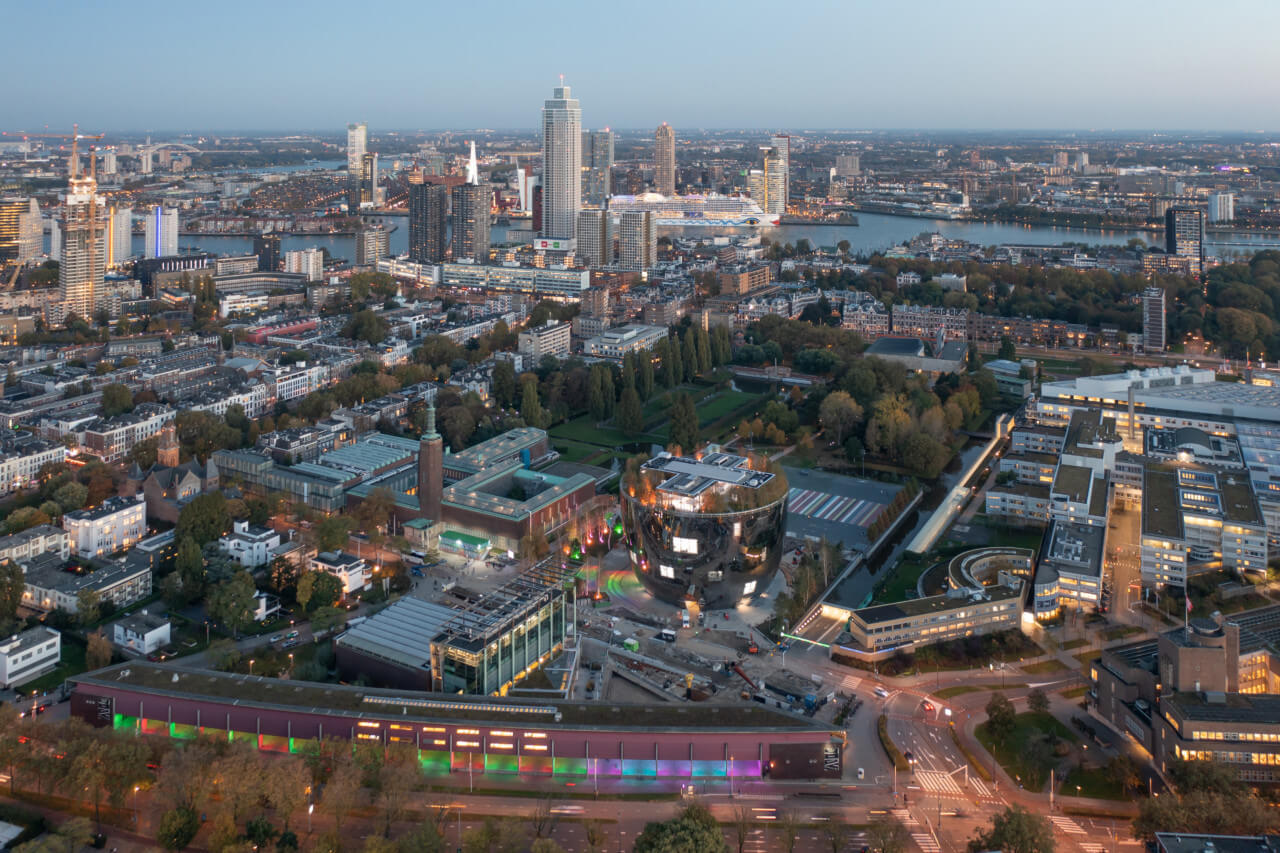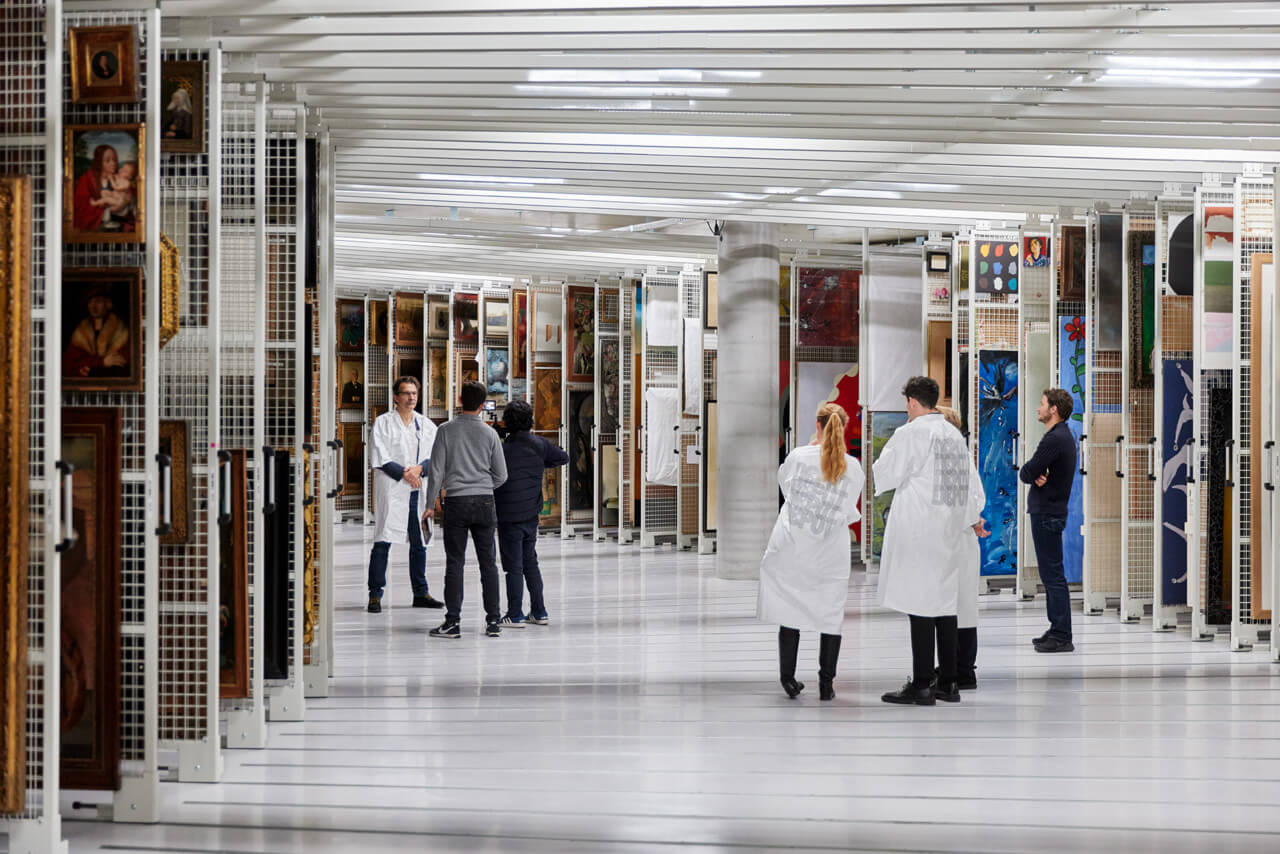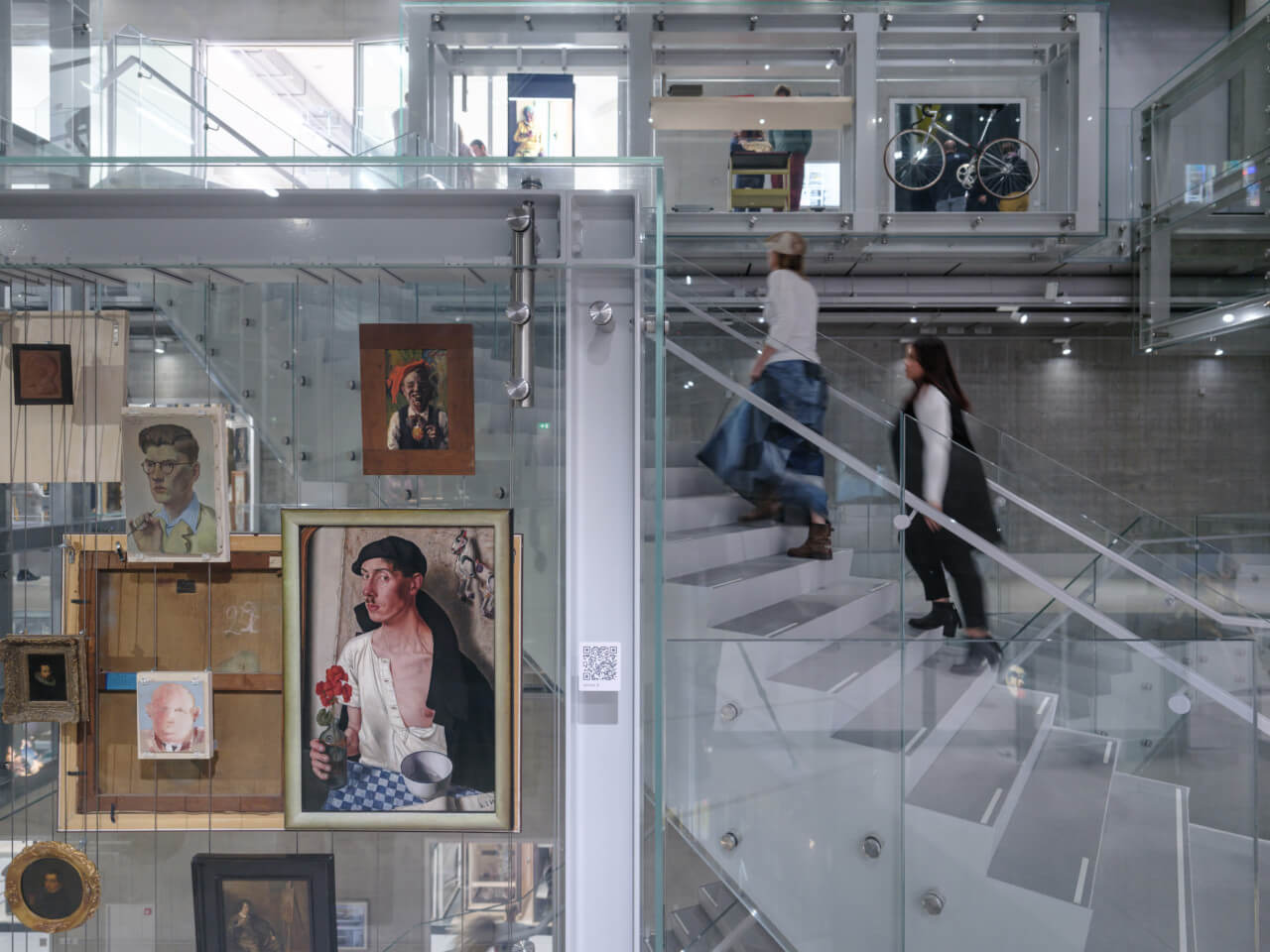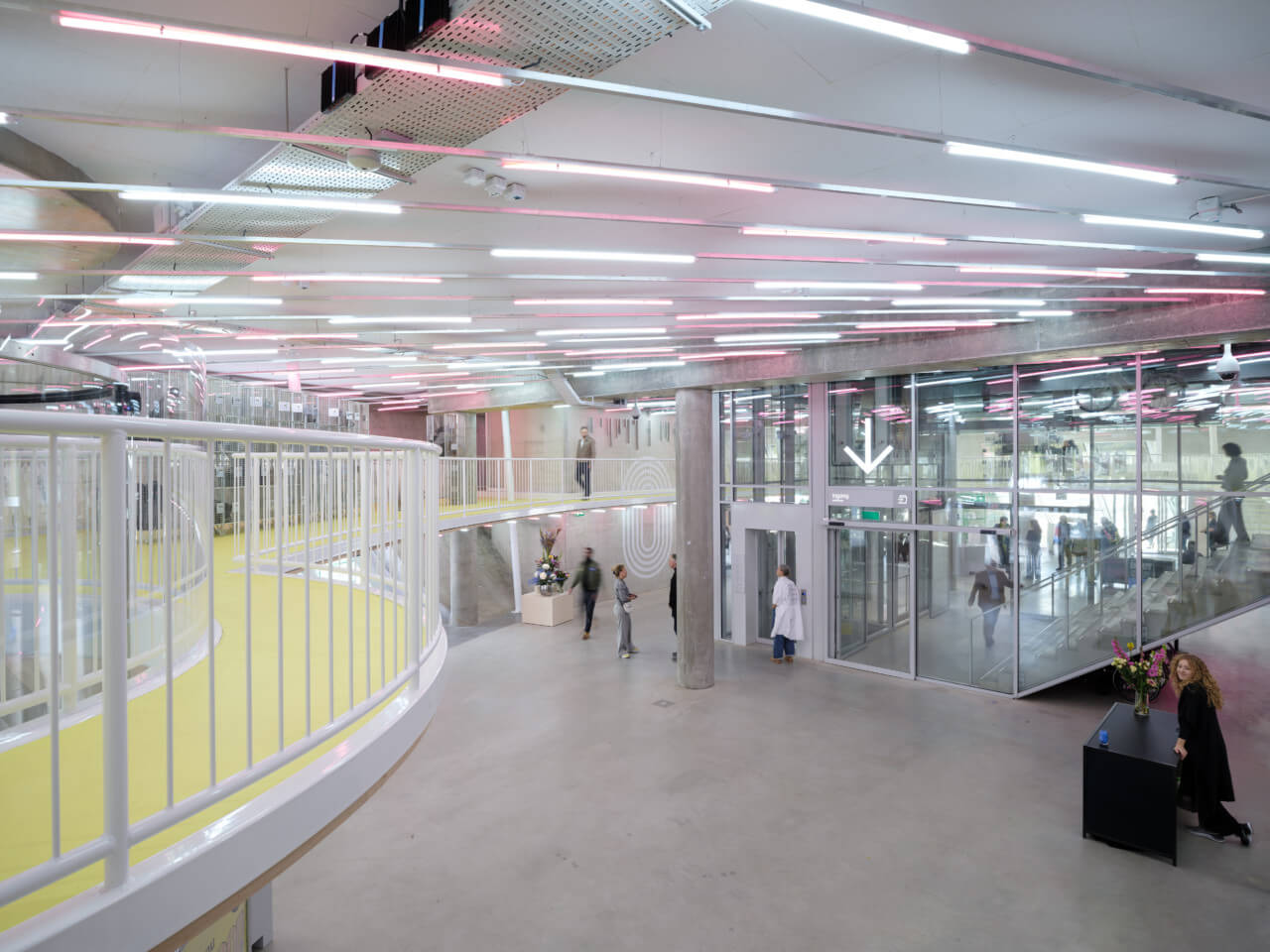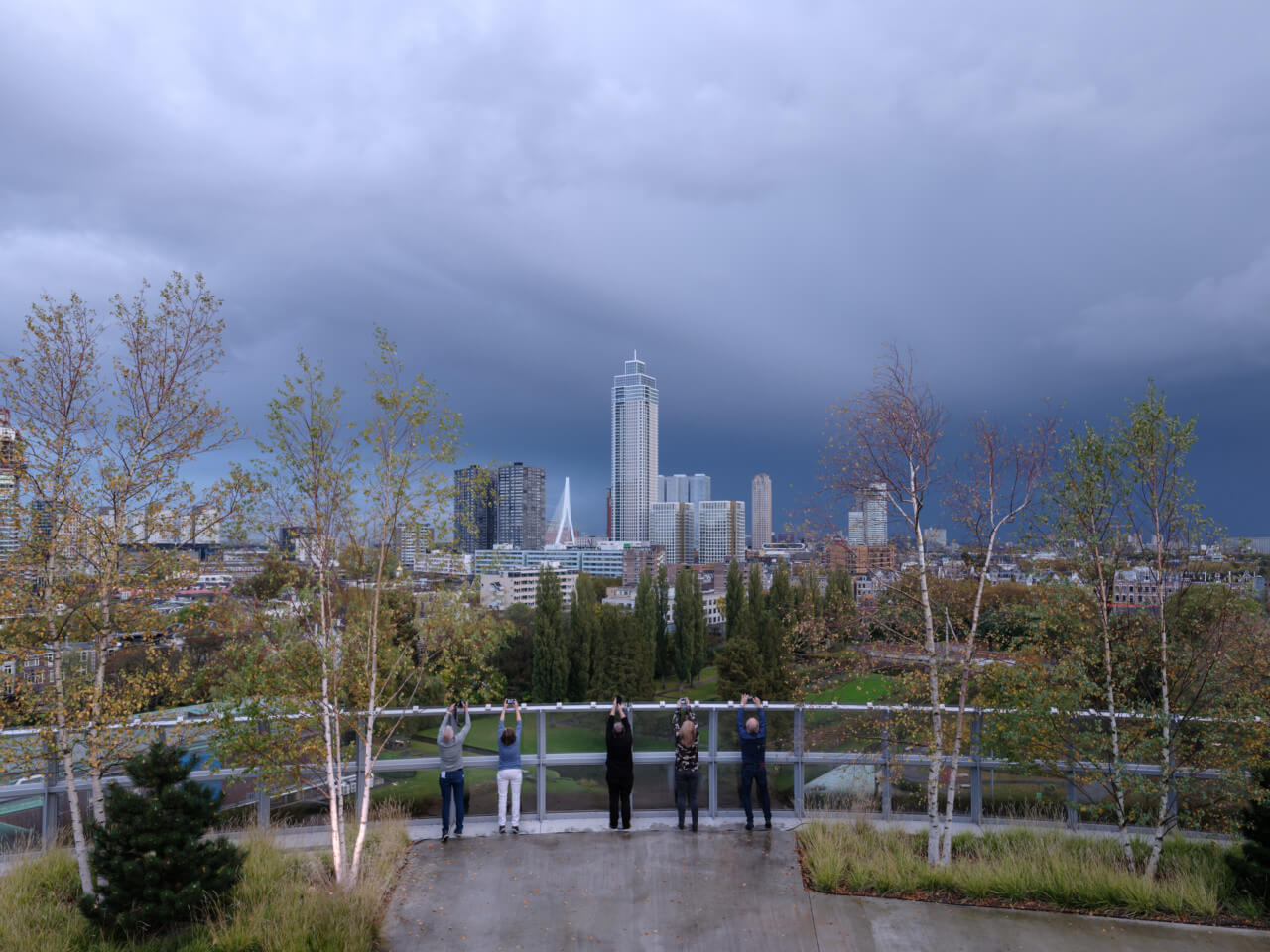Just a little over a year after its completion, the MVDRV-designed Depot Boijmans Van Beuningen is celebrating its public opening this weekend on the grounds of OMA’s Museumpark in Rotterdam. Tomorrow’s debut, concluding a nearly decade-long effort that began in 2013 when MVRDV won the commission, follows a formal opening ceremony led by King Willem-Alexander of the Netherlands.
A highly anticipated hometown project for the Dutch firm, which was subject to a critical and public lashing this summer for its temporary Marble Arch Mound installation in London, the mirror-clad, punchbowl-esque structure serves as the new storage facility for Museum Boijmans Van Beuningen, an esteemed art museum established in 1849 that focuses on the work of Dutch artists.
It is the first publicly accessible museum storage facility of its kind, and visitors can tour the 161,458-square-foot facility independently or with a guide. Museum Boijmans Van Beuningen’s immense collection is divided into five different climate zones with the art itself being organized in accordance to its climatic requirements in lieu of movement or era. Topping the reflective cupped structure is a rooftop terrace, where visitors can refuel at Renilde, a destination restaurant enveloped by a dense stand of birch and pine trees, and take in sweeping views of Rotterdam from 115 feet above Museumpark. (As noted in a press release, the depot’s “rooftop forest” was awarded a prize for “best Dutch roof” well ahead of its opening)
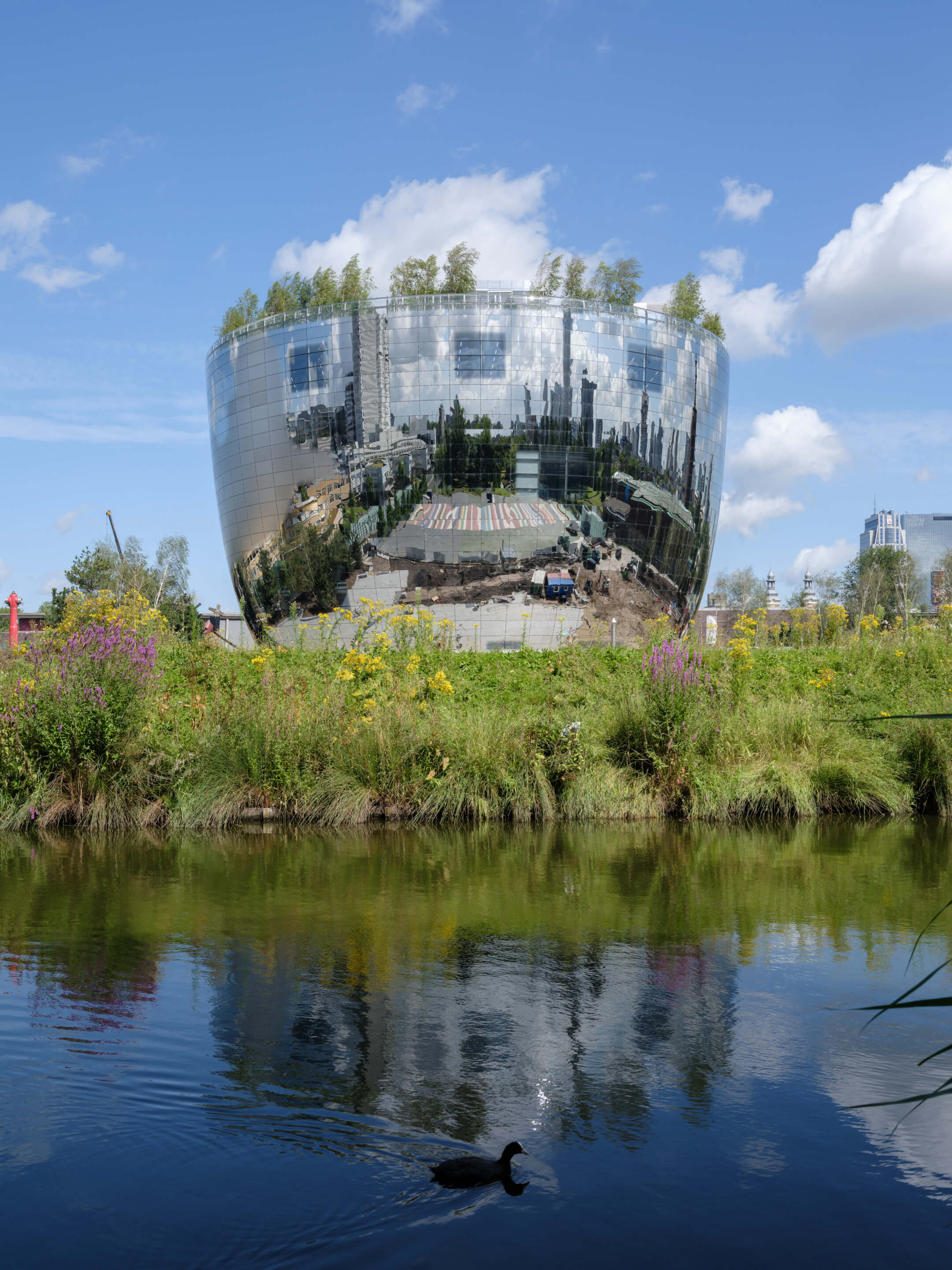
“I think it’s great to see how the depot has been embraced by Rotterdammers even before it opened,” said MVRDV founding partner Winy Maas in a statement. “The depot is a building that makes many people happy; skaters have their own place outside that will hopefully stay, while passers-by try to figure out the best place to stand to take a good selfie. As an architect, I hope that visitors will soon enjoy the interior, the rooftop forest, and the experience of being in direct contact with the art without the mediation of a curator.”
The protracted span of time between Depot Boijmans Van Beuningen’s completion and opening was intentional as it enabled the museum to undertake the herculean effort of moving over 151,000 objects from the museum’s collection into the new facility, which was created as a joint effort between Museum Boijmans Van Beuningen, the Municipality of Rotterdam, and the De Verre Bergen Foundation. (The freshly completed depot was open to curious Rotterdammers briefly in September 2020 so that they could experience the building before the epic relocation process kicked off.)
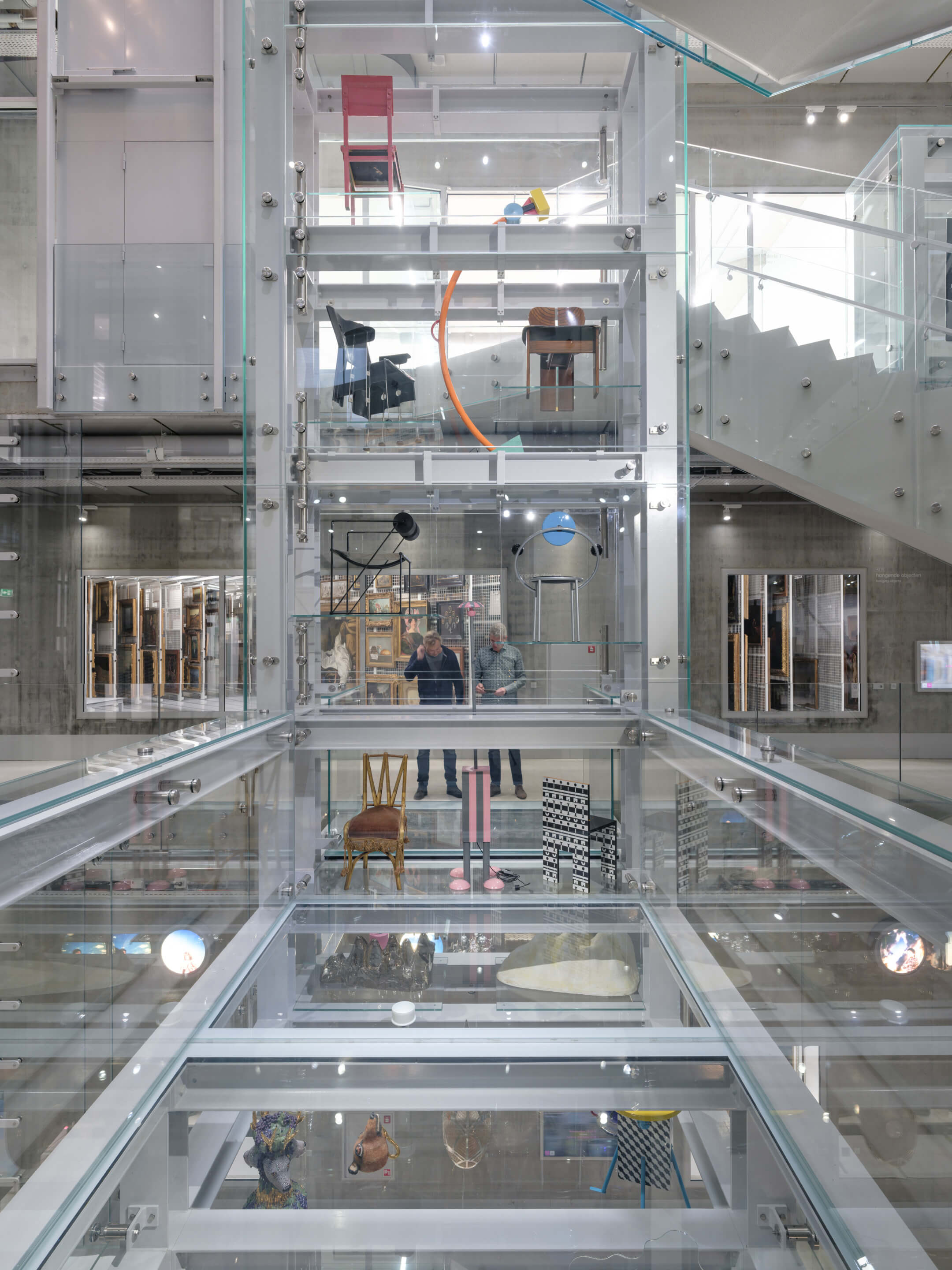
As previously detailed by AN, the museum itself is currently in the midst of an expansive, Mecanoo-led revamp during which select objects from its collection—“highly respected around the world and is unique within the Netherlands,” per the museum—were on loan to Dutch schools and other domestic and international museums. When the depot facility at Museumpark was completed last September, the objects began making their way back to Rotterdam for storage. The refreshed and refurbished museum is expected to reopen in 2026.
A basement area described by the museum as “unsafe, overfull, and outdated” had long served as the depot for the collection although five different off-site storage facilities had been used in recent years as the integrity of the building began to come into question. When tasked with consolidating its collection from several different external locations to a single larger one, the museum opted for the publicly accessible, semi-curated hybrid option adjacent to the museum instead of the standard choice; a cavernous facility in a secure and remote industrial park. As noted by Depot Boijmans Van Beuningen, most major art museums such as itself only display 6 to 10 percent of their collections in public galleries while the remaining 90 percent-plus of their holdings stay hidden away in storage.
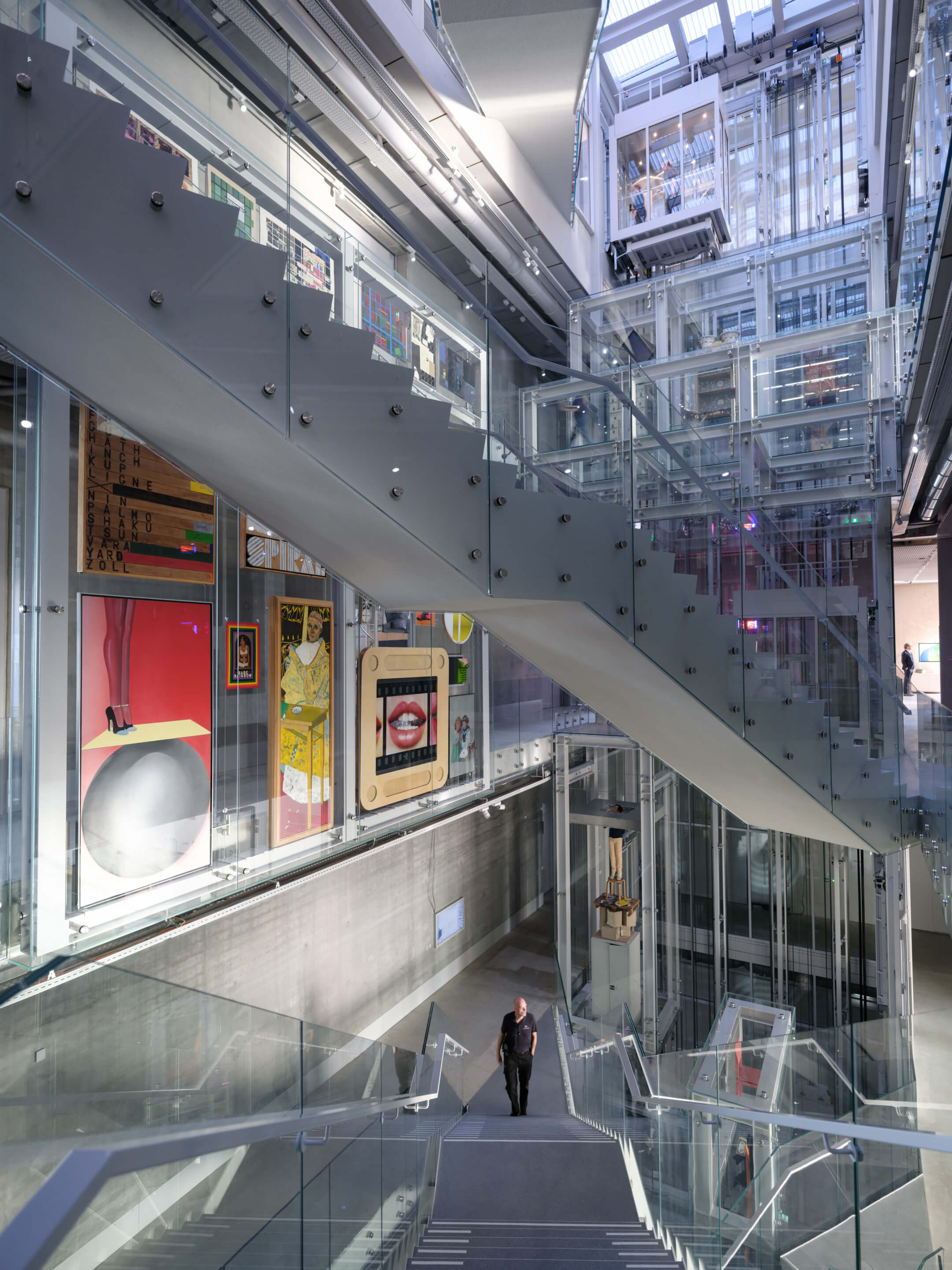
While a lion’s share of space at the depot is dedicated to Museum Boijmans Van Beuningen’s collection, a portion of the facility serves an income-generating commercial purpose and can be rented as arts storage space for private collectors, corporations, or other museums.
“A good house is of vital importance. If you don’t have one, you are already playing in the second division. With the Depot Boijmans Van Beuningen, the amazing collection finally gets its own architecture,” said museum directors Sjarel Ex and Ina Klaassen in a joint statement. “Only then do you see how the functioning of the art storage impacts the museum. With the depot, the museum is giving its collection, which is largely owned by the municipality but also largely by private individuals, a permanent future. Visitors can now see for themselves the love, care, and attention to detail with which each individual work of art is preserved for future generations.”
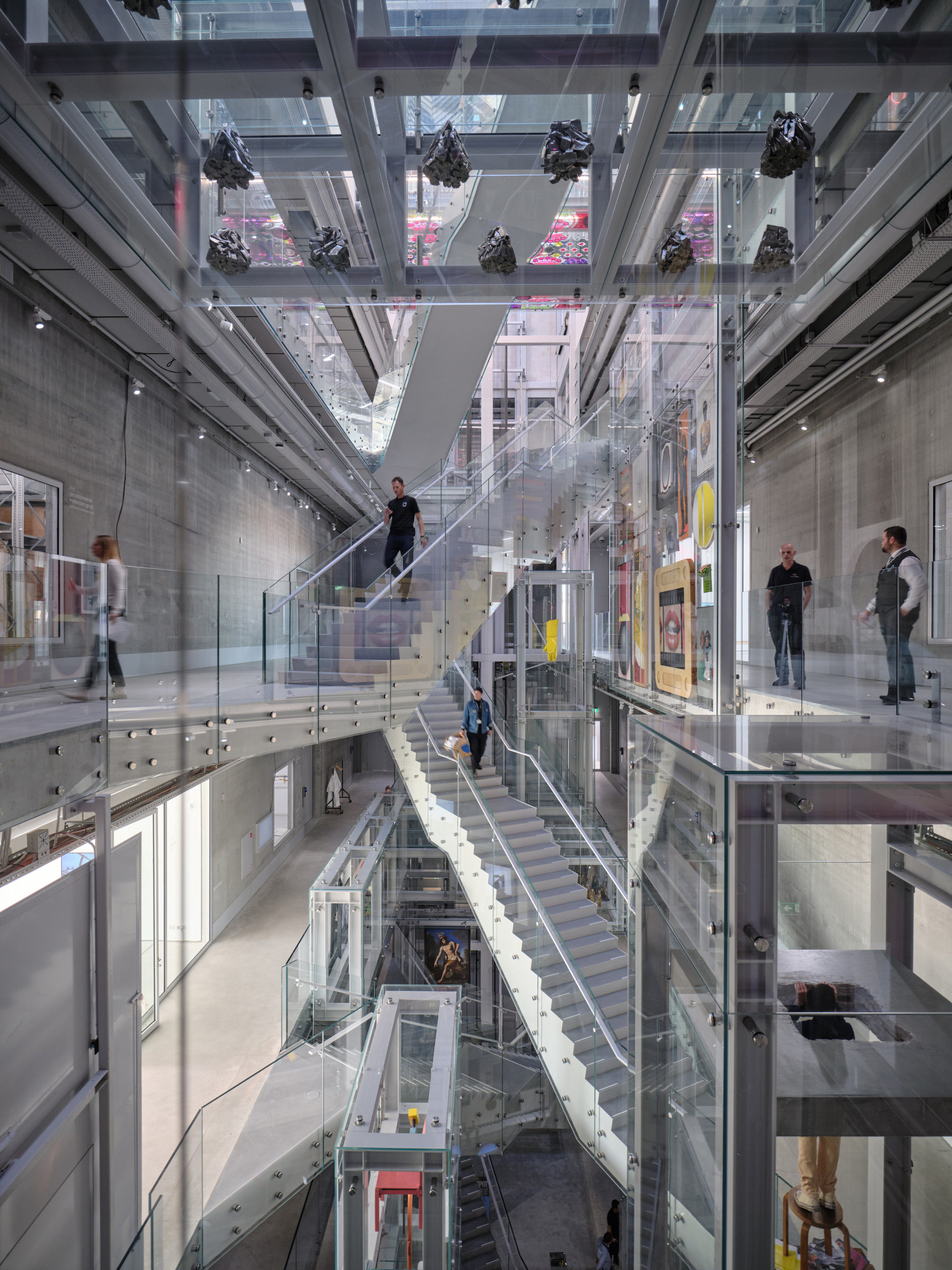
Described by MVRDV as a “round, sturdy, functional building that does not turn its back on its neighbours,” Depot Boijmans Van Beuningen’s mirrored facade (a total of 1,664 glass panels were used) is meant to aid the otherwise highly conspicuous structure in melding into its leafy surroundings. The depot’s main entrance door is seamlessly incorporated into the facade and is only noticeable during open hours when it “opens up like a gadget out of a James Bond film,” per the firm.
After stepping through the stealthy portal, visitors enter into a soaring six-story atrium with zig-zagging staircases (reminiscent of work by Giovanni Piranesi according to the museum) lined with walls of windows that provide clear views into the storage areas. Restoration and conservation facilities are also viewable. Thirteen massive display cases positioned in the entrance hall also “ensure that the visitor comes into contact with a collage of collection pieces as soon as they enter the building.” MVRDV collaborated with several artists on the building’s interior including John Körmeling (main lobby hall) and Marieke van Diemen (atrium displays). Pipilotti Rist designed the depot’s exterior light installation. The larger project team included among others, contractor BAM Bouw en Techniek, structural engineer IMd Raadgevend Ingenieurs, facade consultant ABT, and landscape architect MTD Landschaparchitecten.
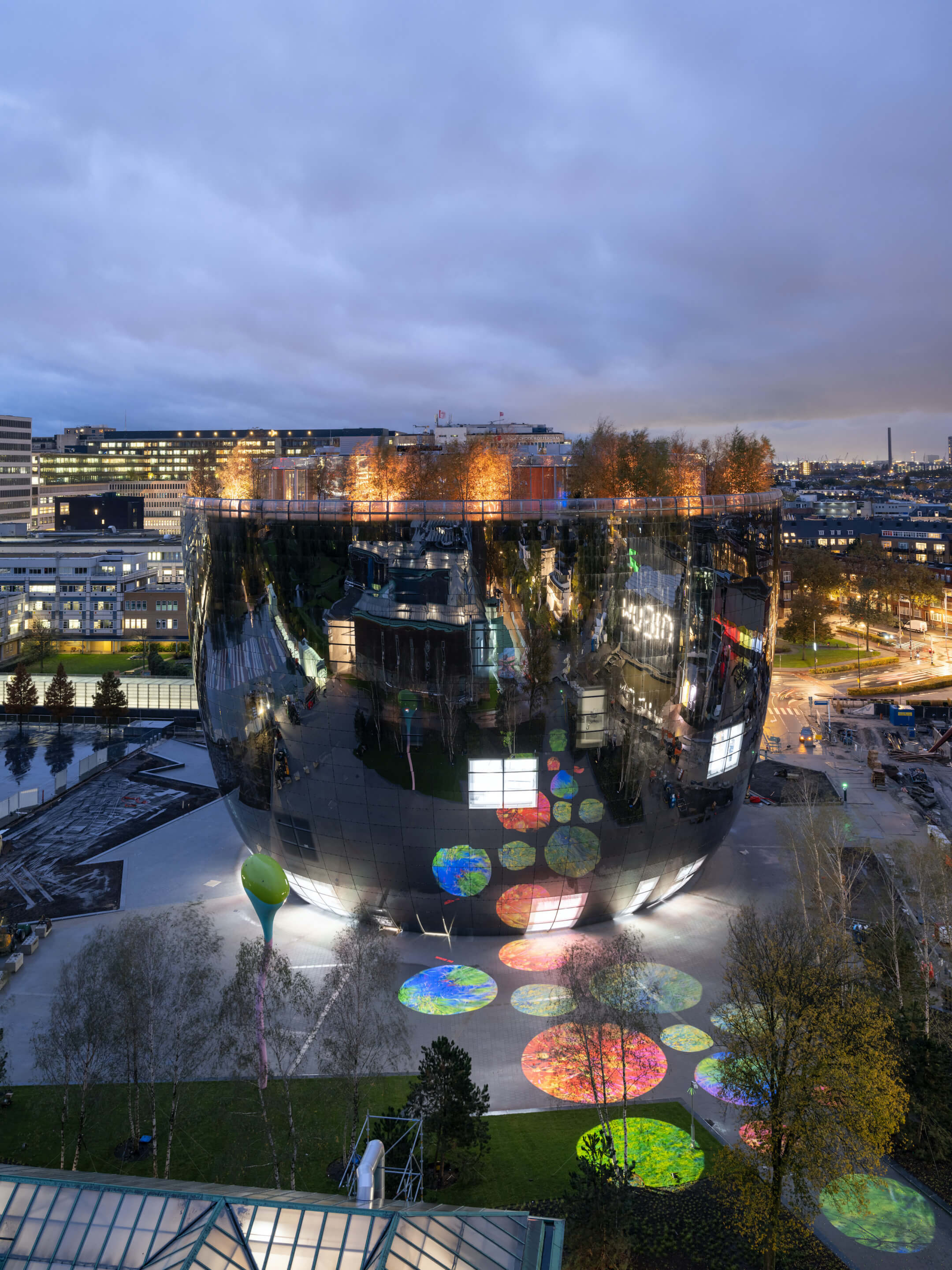
“Our ambition was to give the Museumpark a new dimension, and to bring different target groups, from schoolchildren to Feyenoord fans, into contact with the Boijmans collection in an innovative way,” added Maas. “We hope to have added a new work of art to Rotterdam’s already rich architecture collection.”
Depot Boijmans Van Beuningen is open Tuesdays through Sundays from 11 a.m. to 6 p.m. while the rooftop terrace and Renilde, led by executive chef Jim de Jong, is open later and can be accessed via express elevator without a main entrance ticket during the evening hours.








